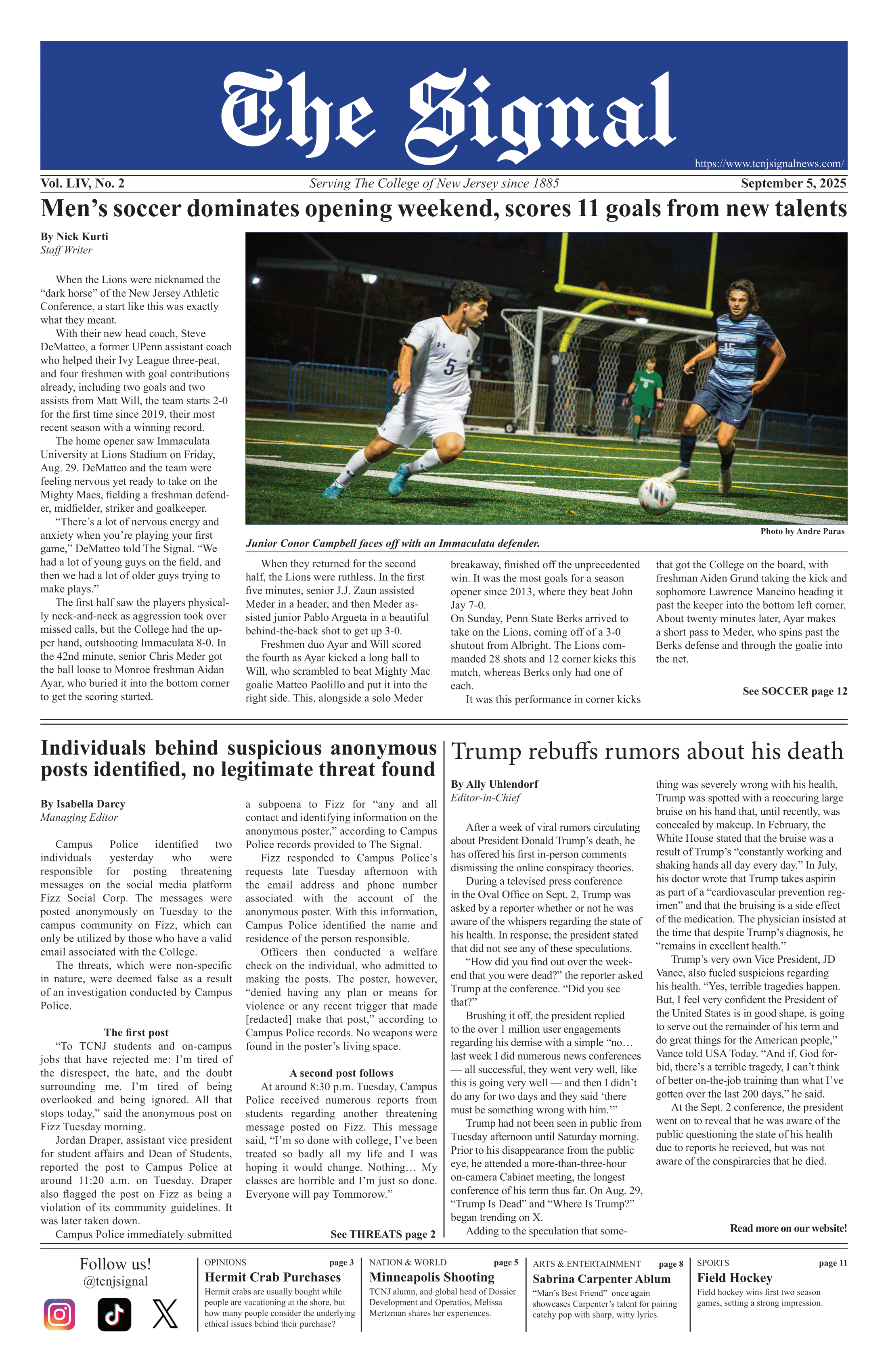The glazed-over faces of survivors of the conflict in Sudan haunted Saturday's "Darfur: Advocacy and Education" presentation in Forcina Hall.
The vacant, far-away eyes could be seen again and again in slides shown by Jerry Ehrlich, a 72-year-old pediatrician from Cherry Hill who traveled to Darfur as part of Doctors Without Borders. "That's Post-Traumatic Stress," he said, identifying the condition seen on the sullen faces.
Ehrlich was joined by U.S. Congressman Chris Smith, a 1975 graduate of the College, in a presentation to raise awareness of the conflict in the Darfur region of the African nation of Sudan. Smith traveled to Sudan in 2005 to tour refugee camps and meet with Sudanese President Omar al-Bashir.
Since 2003, Sudan's government, with the aid of the Janjaweed militia, has been engaged in suppression of the non-Arabs living in Darfur in retaliation for a rebellion that erupted in southern Sudan in the 1980s and continued through the 1990s. Many, including Smith and Ehrlich, characterize it as genocide.
The United Nations estimates the death toll at over 400,000, while more conservative estimates say there have been between 200,000 to 300,000 lives lost. More than 2.5 million people have been made refugees by the conflict and now live in camps in Darfur and neighboring Chad.
"The level of slaughter by the Janjaweed and the Sudanese government caught the world . somewhat by surprise," Smith said.
Smith noted reluctance on the part of the international community to refer to this conflict as genocide. "Once you brand it genocide, they have to fall in line and do more about it than they've done so far," he said.
Smith warned against inaction. "Despotic regimes take note when nothing is done or little is done or the reaction is ineffective or feckless, and that is what happened in Darfur," he said.
Members of the United Nations have threatened military intervention but are hindered by China's presence on the U.N. Security Council. China is a known economic supporter of Sudan.
Smith said there are about 5,000 peacekeeping troops from the African Union in Sudan today, but that this is not an ideal number. "Experts say that 21,000 will make a difference," he said.
After Smith finished speaking, he turned the floor over to Ehrlich.
"This is the only legal slide you're going to see here today," Ehrlich said when a photograph of two "peace and unity" flags he took in Darfur appeared on the screen. "My thoughts on this?" he asked. "An absolute joke."
Ehrlich's next slide showed a crayon drawing of planes bombing a village. Dead bodies lined the ground while houses burned. "This is Darfur through the eyes, the mind and the heart of a 10-year-old boy," Ehrlich said.
When Ehrlich traveled to Darfur in 2004, he brought crayons and paper with him so the children in the Kalma refugee camp could draw. He also brought a camera to take pictures of the camp, but found he had to do so secretly. "In order to take pictures of Kalma camp, you had to get a special permit when I was there and you had to be escorted by a member of the Sudanese government," he said. "They did not want you to have pictures of Kalma camp."
Ehrlich smuggled his photographs out of the country, hidden inside a copy of The New York Times.
Ehrlich's photographs depicted dozens of emaciated people living in the Kalma camp.
One 2-year-old was shown on the ground, his thin arms draped over his chest, where every rib could be seen. "He is very, very vulnerable, his lungs to malaria, his intestines to diarrhea," Ehrlich said.
Ehrlich wrapped up his presentation on a note of introspection. "People say, 'Jerry, what the heck did you accomplish in Darfur? What did you accomplish in this place of such atrocity?'"
Ehrlich then revealed his final slide, a picture of a young woman holding her baby in her arms, a smile on her face. It was the first smile in any of Ehrlich's slides.
"This is what I want to remember about Darfur," he said. "The look on her face."






